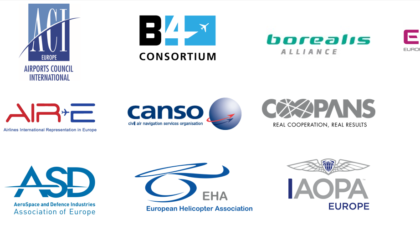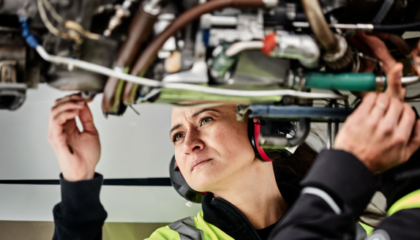
ATM reform in motion
The long-awaited legislative proposal will hopefully be approved by the end of 2021
The European Commission published its proposal on the Single European Sky II + (SESII +) Package. It is about reforming Air Traffic Management (ATM) in a significant number of strategic elements. In essence, it tries to build back better by setting the foundations for a more sustainable and efficient ATM system that is more resilient to any level of capacity, while maintaining the same level of safety.
A good start
EBAA welcomes the European Commission’s work in putting the draft SES II + proposal back on the table. While we support many of the improvements laid out in the regulation, EBAA published a joint review together with other airspace user Associations to address some areas of concern.
To align with the ambitions of the European Green Deal, the Commission investigates any possible option to mitigate and reduce aviation’s carbon print. In the scope of ATM reform, it proposes to modulate en-route charges for aircraft equipped with ‘clean’ technologies or burning sustainable aviation fuel, whereas a ‘polluting’ aircraft would have to pay higher charges.
While we recognise the need to reduce aviation’s carbon print, EBAA has expressed its disagreement with the modulation of charges. We consider that SES II+ specifically addresses ATM and should focus on boosting ATM measures which contribute to this reduction. It drives the right behaviour of the Air Navigation Service Providers towards sustainability (e.g ensuring smooth and timely deployment of EGNOS-based procedures which are key tools to bring operational credits). The full implementation of the SES will lead to a reduction of emissions due to increased efficiency of the network structure and improved co-ordination between Air Traffic Service providers, therefore the focus should be on the delivery of the best ATM service.
Other measures are also planned for mitigating the aviation’s environmental impact and need to be carefully reviewed and discussed with the Airspace Users (the revision of European Emission Trading Scheme for aviation, the review of the fuel taxation directive and blending mandates at European level). EBAA is calling for a holistic approach of all these measures and for not finger-pointing air operators for doing their job, bringing passengers from A to B by the air.
EUROCONTROL & The Network Manager
The SES II+ also features the further empowerment of EUROCONTROL in managing the European network. The Agency has been doing it successfully since July 2011 and has been reappointed as the Network Manager (NM) for the period 2020-2029. As Eurocontrol’s Director-General, Eamonn Brennan said, this is a ‘clear recognition of the value we bring to the role’. EBAA recognises this added value.
The Network Manager should be at the forefront for the delivery of network performance and should continue to be actively engaged in a managerial role to support and facilitate EU-wide decisions in the interests of the network. This will optimise performance and help achieve the ‘benefit for all’ approach, which is of key importance to us as the NM serves the entire network, both large and small aerodromes.
While we see merit in broadening the Network Manager’s functions as Airspace Manager, Capacity Manager and Infrastructure Manager, this extension of competences must be based on a proper governance structure which would enable all Airspace Users to have a tangible influence. Flexibility, scalability, and accountability must be ensured. Airspace Users (AUs) are the end-user, and therefore are the ultimate financier of the system. We, therefore, requested a governance structure to be defined and regulated in ensuring that the operational/technical requirements and business needs of all AUs are properly balanced and reflected in the Network Manager’s work programme/areas of competence. Within that governance structure, principles for a real collaborative decision-making process must be defined, again, with appropriate checks and balances with jointly agreed costs and milestones in the best interests of the Network as a whole. The SES II+ proposes to empower the NM with a leading role in capacity management, making the capacity plans of the Air Navigation Service Providers mandatory. This should lead to less fragmentation, more resilience, flexibility, and enhanced cross-border capacity.
In case capacity targets have been reached in a certain airspace, AUs should not be forced to fly in another airspace when there is still an actual capacity (unless if compensated for doing so). This would otherwise contradict the objectives to foster shorter routes and less CO2 emissions. While we support the NM to have a greater role in the infrastructure Manager, EUROCONTROL should further pave the way for a proper Communication-Navigation-Surveillance infrastructure evolution reflecting all airspace users’ needs. The level of onboard-equipment across our fleet of aircraft varies. Those willing to retrofit their aircraft sometimes face the unavailability of avionic solutions. The SES should support the industry in filling in this gap. We, therefore, see this as being an essential role in the ‘Infrastructure Manager’.
The European Commission’s proposal on SES II+ is now under discussion at the European Parliament and of the Council. It is not excepted to be finalised earlier than the beginning of Q2 2021.







